Introduction
By now we know that Canon can produce superb L-class lenses but the photographic world isn’t just about high-end R-mount gear and it’s good that they’ve finally started to release some gear for the rest of us. One of the early examples is the Canon RF 85mm f/2 STM IS macro. Obviously, it’s a medium-tele prime lens but with a little twist this time. Traditionally such lenses are slightly faster at f/1.8 but Canon decided to sacrifice a little bit of speed for macro capabilities. Regarding its max object magnification, it’s not a true macro lens but this middle ground between a traditional 85mm f/1.8 and 100mm f/2.8 (1:1) macro lenses is surely an attractive value proposition for many buyers in this price segment. Speaking of the price – it can be yours for around $600USD / 700EUR. That’s substantially more expensive than the old Canon EF 85mm f/1.8 USM and EF 100mm f/2.8 USM macro but we aren’t in the 2000s anymore and at this point in time, the price tag can be considered as reasonable in the grand scheme of things.
The build quality is good but it’s obvious that this lens doesn’t target professional users. There is no weather-sealing, for instance. The inner lens tube extends when focusing towards closer distances which feels a little dated. The inner lens tube does also slightly wobble which is somewhat disappointing. The used materials are of good quality with some kind of plastics used for the lens barrel based on a metal mount. Canon doesn’t supply a lens hood – albeit they never did for non-L lenses. The lens does retain the configurable control ring though. The broad, rubberized focus ring operates smoothly. It’s also noteworthy that the RF 85mm f/2 STM IS macro is bigger than the EF 85mm f/1.8 USM – confirming once again that mirrorless lenses aren’t necessarily smaller than their DSLR counterparts.

The cost-cutting measures continue with respect to the AF system. Rather than using a USM drive, Canon opted for the STM (Stepping motor) variant here. The AF speed is still very good but you will have to live with some high-pitch noise during AF ops. Manual focusing is possible via the usual “by-wire” system so you drive the AF motor when turning the focus ring. Interestingly, a 5 f-stop image stabilizer has been implemented thus its low light capabilities can often match and even surpass that of faster lenses. Combined with the EOS R5/R6, Canon even suggests a whopping 8 f-stop efficiency. As so often we’d suggest taking these f-stop claims with a sack of salt especially on the R5 with its high megapixel sensor.
| Specifications | |
|---|---|
| Optical construction | 12 elements in 11 groups including 1xUD element |
| Number of aperture blades | 9 (rounded) |
| min. focus distance | 0.35m (max. magnification ratio 1:2) |
| Dimensions | 78×90.5mm |
| Weight | 500g |
| Filter size | 67mm |
| Hood | barrel-shaped (bayonet mount, optional) |
| Other features | Control ring, focus distance switch, 5 f-stop image stabilizer |
Distortion
85mm lenses tend to be rather simple beings in terms of optical design so it doesn’t come as a surprise that image distortions remain very moderate at just 1.1% (pincushion) in RAW files. That’s slightly higher than on true macro lenses, though. Of course, image auto-correction can eliminate these traces so it’s usually nothing to worry about anyway.
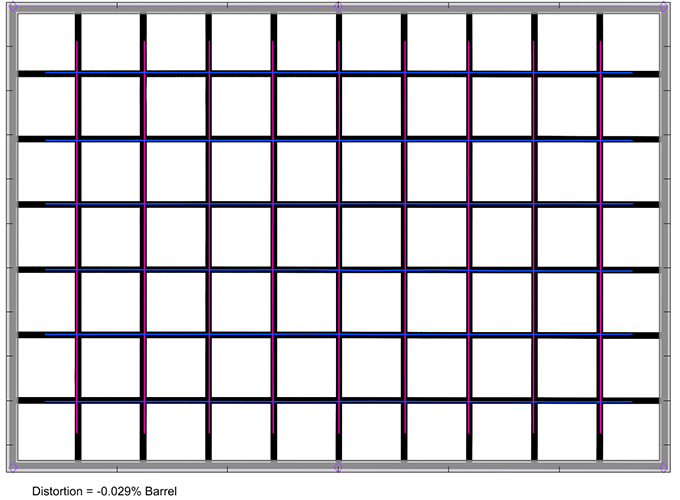

Vignetting
The vignetting characteristic is typical for a lens in this speed class. RAW images show a substantial degree (2 f-stops) of light falloff at f/2. The issue is very much reduced at f/2.8 and basically gone from f/4 onward.
Activated auto-correction is fairly aggressive, with a 1.5 f-stop gain at f/2 – and the corresponding increase in sensor noise in the corners. The correction is much less pronounced at smaller aperture settings, of course.

MTF (resolution) at 45 megapixels
The resolution of the Canon RF 85mm f/2 STM IS macro is very impressive straight from its maximum aperture setting. The broader center is already excellent at f/2 and the borders/corners are very good. Stopping down to f/2.8 provides an extra boost. The peak quality is reached at f/4 with an excellent quality across the entire image field. Diffraction has a slight impact between f/5.6 and f/11. A more pronounced drop starts at f/16 where the resolution hovers around good to very good marks. We wouldn’t really recommend stopping down beyond f/16 unless you have a lower megapixel camera.
The centering quality of the tested sample was good. The field curvature is low.
Please note that the MTF results are not directly comparable across the different systems!
Below is a simplified summary of the formal findings. The chart shows line widths per picture height (LW/PH) which can be taken as a measure for sharpness. If you want to know more about the MTF50 figures, you may check out the corresponding Imatest Explanations

Chromatic Aberrations (CAs)
Lateral CAs have an average width of around 0.3px at the image borders. This is negligible.

Bokeh
Given the large max aperture and macro capabilities, the quality of the bokeh will be an interesting aspect for most users.
Out-of-focus highlights are nicely rendered. The discs have a very smooth inner zone and there’s basically no outlining effect. The circular disc shape is maintained from f/2 to f/4 which is better than on most lenses.

The above is true for the image center. As so often, the circular disc shape deteriorates to cat eyes in the image corners. This starts fairly “early” at f/2. The “circular shape” zone broadens substantially at f/2.8 and the outer discs are almost fully corrected at f/4.
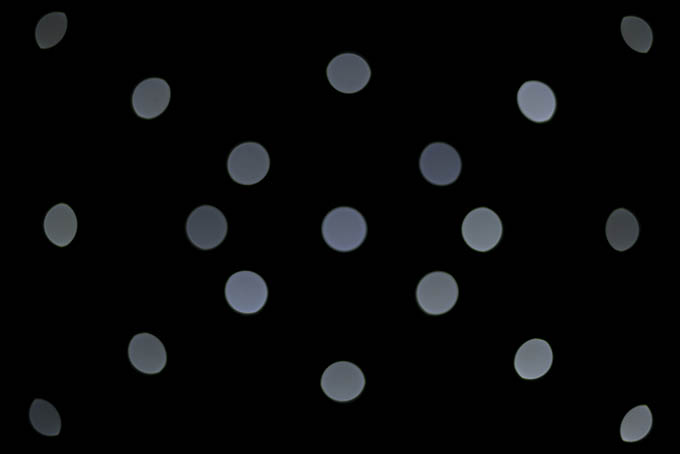
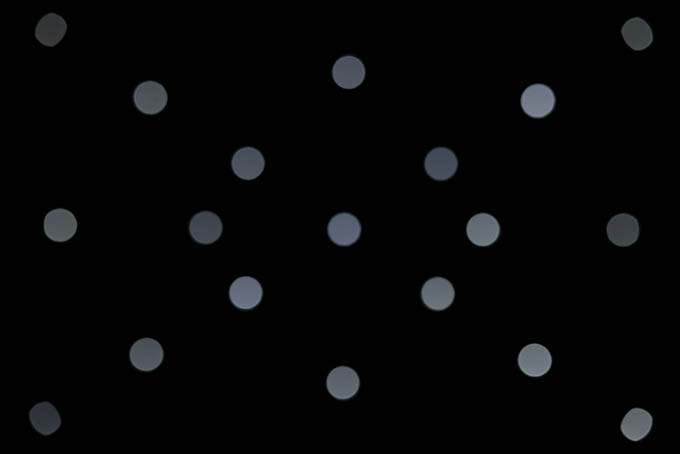

As far as the general blur is concerned, there are two flavors to discuss here. The foreground blur (shown to the right below) is very smooth and buttery whereas the background blur (to the left) exposes some hard edges at high contrast transitions. This is also something that you may observe in some of the provided sample images.

Bokeh Fringing
In a perfect world scenario, you won’t see any axial CAs thus color fringing on the Z-axis. However, only a handful of fast lenses are correcting the issue effectively – and the RF 85mm f/2 STM IS macro is not among them. You should be able to spot a significant amount of purplish fringing in the foreground and a greenish tint beyond the focus point. The effect is reduced at f/2.8 and minor traces remain visible at f/4.
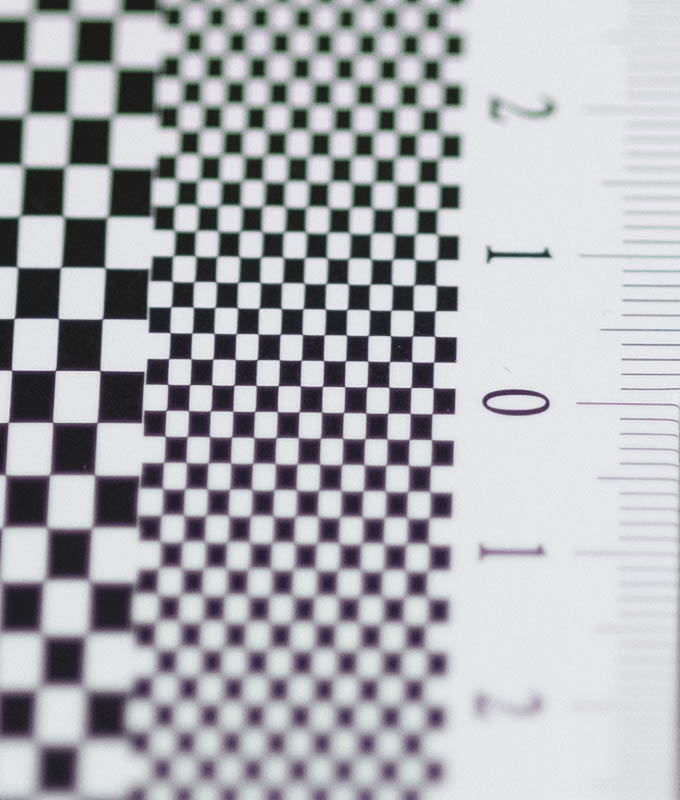

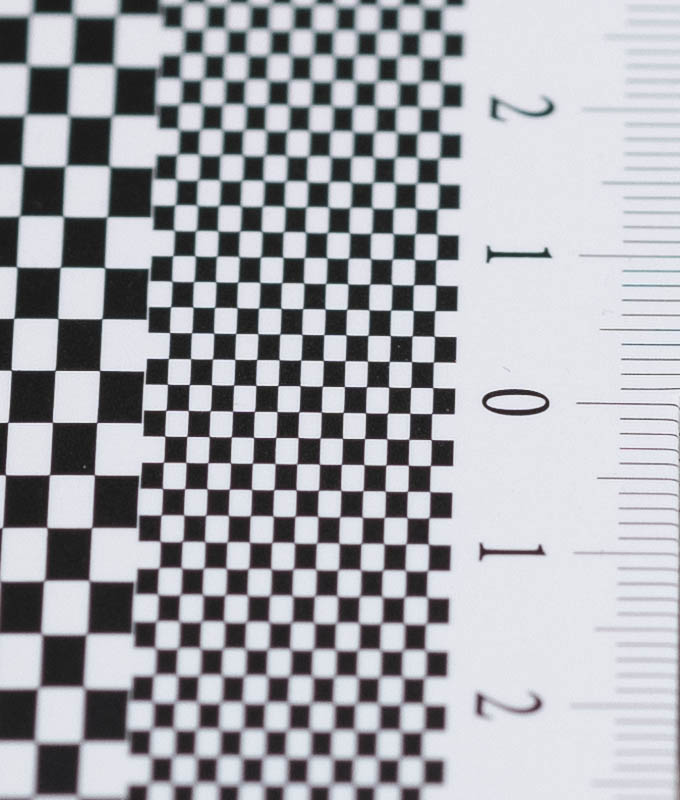
Sample Images
Competition
As of the time of this article, Canon hasn’t licensed their mount to other manufacturers and the third-party gang is still busy reverse-engineering the protocol. Samyang is the only other manufacturer offering AF lenses in R mount. The only really realistic competitor for the Canon RF 85mm f/2 STM IS macro (shown to the left below) is the Samyang AF 85mm f/1.4 RF (center). In terms of sheer performance, it can’t really reach the Canon lens but it’s a full stop faster thus, if you are on a budget and need the extra depth-of-field potential, it’s worth a thought – and it’s available for the same price. Beyond the Samyang, we are entering the realm of more exotic options. There is, of course, the Canon RF 85mm f/1.2 USM L (DS). An awesome lens at an insane price so it’s out of reach for most mortals. Another option would be to go for an adapted lens – but we aren’t really fans of non-native lenses for various reasons.

Visual com
Just like basically all fast, medium-tele prime lenses, the Canon RF 85mm f/2 STM IS macro is capable of delivering outstanding image quality. It's already very sharp at f/2 - even on a high megapixel body - and it's about as sharp as it gets at f/4. Lateral CAs are negligible. There's a slight degree of pincushion distortion but image auto-correction can eliminate the traces without significant side effects. A vignetting of 2 f-stops at f/2 is in line with other lenses in this class so an activated auto-correction is a good idea here. The quality of the bokeh is a bit of a mixed back. Out-of-focus highlights are nicely rendered in the image center but suffer from the usual cat-eye effect in the corners. While the foreground rendering is very smooth, the more critical background blur can be a bit busy. There's also a visible amount of LoCAs (bokeh fringing) at large-aperture settings which just can't be easily corrected.
The build quality is generally good but it doesn't truly impress. An extending and quite wobbly inner lens tube feels like belonging to a past era really. Conversely, the truly ancient Canon EF 85mm f/1.8 and EF 100mm f/2.8 USM macro offer internal focusing. There is also no weather-sealing and the AF, while quite fast, isn't noiseless. So there are some aspects where you can feel that Canon had to cut corners. The quality of used materials is quite Ok but you don't get the impression that the lens body has been cut from rock either. A highlight is certainly the image stabilization system with a claimed efficiency of 5 f-stops (8 f-stops when combined with the camera IS). While we won't sign this figure with blood, the results are impressive nonetheless.
However, despite a few downsides, the Canon RF 85mm f/2 STM IS macro remains a very desirable and versatile lens with a fairly attractive price point. As such - highly recommended!
-
Optical Quality (30mp)
-
Build Quality
-
Price / Performance


